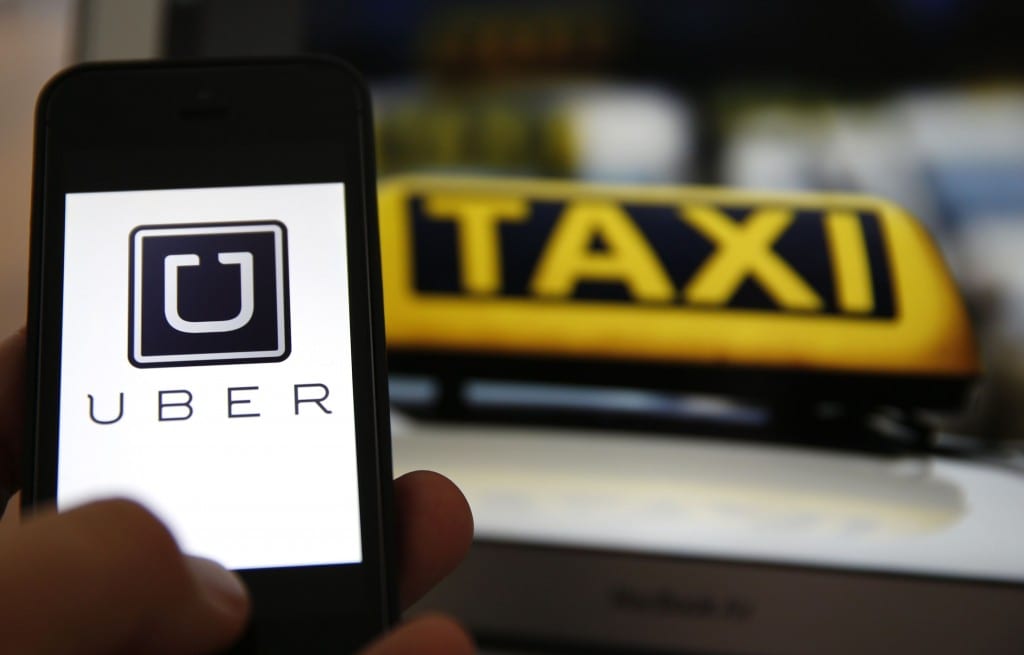
So far there are reasons to be bullish, says Alan Jiang, who is in charge of launching Uber in each new country it enters and is currently working as acting general manager of Uber Indonesia as it searches for more staff.
Since launching in Jakarta last August, Uber’s registered users have grown faster than in any other city it serves, said Mr. Jiang. “There is huge opportunity in Jakarta and Indonesia, for this business,” he said.
Indonesia’s huge population of 250 million people – the world’s fourth-largest – is one reason, Mr. Jiang said. Increasing incomes and urbanization are others.
Uber works in any city in Indonesia where people who don’t own cars are willing to pay for ways around unreliable public transportation, he said.
Unlike some of the 58 countries where it operates that rely on freelance drivers, Uber in Indonesia works with private car services to source its cars and drivers.
But the San Francisco-based app has faced challenges from local government officials who say the service isn’t licensed as a taxi and can’t be used to pick up passengers. Mr. Jiang says Uber is not a taxi service but operates as a private car hire.
“We are working with regulators around the world to establish a clear, legal framework to allow riders and drivers to have more economic opportunities and safer and easier rides,” he said.
Uber has also struggled to compete against more established taxi companies, such as Blue Bird. Until earlier this year Uber only offered a premium service called UberBlack, which Mr. Jiang says is about 5% more expensive than a taxi. It launched lower-cost UberX in January to provide more competitive pricing, and Mr. Jiang said it’s fast becoming the more popular service, with prices around 30% cheaper than a taxi. The average trip in Jakarta is about 40,000 rupiah, or $3, he said.
The Wall Street Journal caught up with Mr. Jiang recently to talk about Uber’s business model in Indonesia and the challenges of doing business here. Edited excerpts.
WSJ: How much money has Uber invested in Indonesia?
Mr. Jiang: We’re investing a lot of money in Indonesia and we will invest enough money to make it work here. Jakarta is fastest growing city ever [for Uber], and we can see that investment is paying off.
WSJ: What is the company’s business model in Indonesia, and why has Uber taken that approach?
Mr. Jiang: We take a 20% commission for the UberBlack [service] and drivers keep the rest. For UberX, right now we take no commission. As an investment, 100% goes to the driver’s pocket. In the future, there will be commission. Our focus is to get people into [Uber] cars for the first time. So we [have] partnered with events like [dance music festival] Djakarta Warehouse Project, because the best marketing for us is through user experience.
WSJ: How do you ensure safety in accident-prone streets of Indonesia, as well as security for Uber passengers?
Mr. Jiang: When you get into Uber, you specifically are matched with one driver and that’s tracked onto our system. We have basically stepped up our safety game a lot … In Indonesia, we’re really emphasizing on this “Show Your Location” feature, so if the driver ever goes off course you will be notified. We also require background checks to verify that they have no criminal history and every driver must come to our training session, where we explain what the SOP [standard operating procedures] are and we personally screen every single driver.
WSJ: Uber also only takes credit card payments in a country where few people have them. Have you considered adjusting your system to cater to the non-credit card owners in the market?
Mr. Jiang: With credit cards, it allows us to make the whole experience completely seamless. You can see the map of where you went after the trip, and if the route looks funny, we can actually adjust the fare. In India we’re running an experiment now with cash payment.
WSJ: Will you do the same experiment in Indonesia?
Mr. Jiang: It depends. We’ll see how it goes in India.
WSJ: What other challenges does Uber face in Indonesia?
Mr. Jiang: Hiring. Indonesia is one of the toughest markets for hiring, and we are hiring a lot of people this year. For Jakarta, the challenge is obviously the traffic, but we’re getting better and better at predicting where demand’s going to be and to fulfil that demand.
WSJ: How much revenue has Uber gained from Indonesia since August?
Mr. Jiang: I can’t say, but our biggest week this year is about 10 times bigger than our biggest week last year, in December. But we’re not profitable yet.